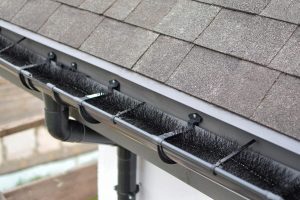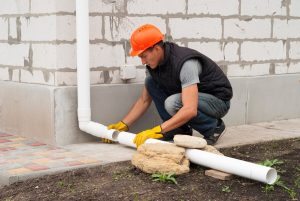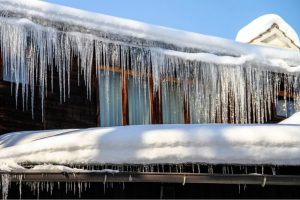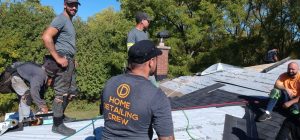Letting the Snow Pile Up on Your Roof? Here’s Why You Shouldn’t
Jan 29, 2023

There’s nothing quite so romantic as a quiet winter night with snow-capped rooftops as far as the eye can see. While this scene makes for a picture-perfect greeting card, it’s not exactly as lovely in reality. We often don’t think much about our rooftops during the winter, busying ourselves with seemingly more pressing concerns like shoveling the snow off the driveway, and salting the walkway.
Since our roofs are one of the biggest parts of our homes that protect us from the elements, it’s important to remove the build-up of snow in order to keep our roof and thus our home, in the best working conditions. Here are some reasons why you shouldn’t let the snow pile up on your roof with the help of a professional roofer.
Heavy Weight Can Cause Structural Damage
We don’t often think about it, but snow can be extremely heavy. On average, 20 pounds per square foot of roof is usually the most a house can handle. While the slopes and inclines in our roofs are there to help the snow slide off, packed snow can stay stagnant and not budge. If the old snow hasn’t slid off, and if new snow is falling, this could cause great damage to your home, especially if the snow has mixed with ice.
This can put enormous stress on your roof, leading to a potential collapse. The problems overloaded roofs bring with them aren’t worth the risk, or the avoidance of a nominal snow removal fee. The replacement of a new roof is far more expensive, harmful, and bothersome to deal with. Some of the warning signs you should look for are doors jamming inside your home (a sign that pressure is building), cracking, creaking, or popping sounds, sagging, leaks, or cracks in your walls.
Water Logging Can Cause Leaks
Those of us who live in cold climates know that winter doesn’t just mean snow. The variation of precipitation includes sleet, rain, ice, hail, and snow. With the rain or sleet that often does fall in the winter, your roof is exposed to greater risk. While this can cause your roof to become even more burdened, it can also cause moisture damage.
With the heat from the interior of your home escaping upwards through the roof, ice and snow on the roof begins to melt. This then results in water running down your roof. Mixed in with the cold exterior temperature, the water can then freeze, and clog your gutters.
If this cycle continues, the runoff will have nowhere to go, and will trickle down under your roof shingles. Once this happens, water can start dripping from your ceilings, causing leaks and damage to the structure, not to mention completely disrupting your life. Look out for ugly brown stains on your ceilings if you are worried you might have this problem.
Snow Build-Up Can Be Hazardous
Another thing we don’t often consider is the hazards that falling snow or ice can cause. If the snow is too heavy or wet on your roof, on a warmer day, it can easily slide off the slope and fall directly in your path.
While this isn’t as common as some of the other caveats, falling snow and ice is a serious danger to you and your family, and can cause some harmful effects. Beware of this happening, especially in oft-traveled areas like your front walkway, right under the front door, and your back patio.
Ice Dams in Your Gutters Can Form
While you might be aware that ice dams can form from clogged gutters, you might not know that snow and ice build-up on your roof can also cause ice dams. In a similar idea to the water leaks we outlined above, ice dams can form from heat escaping from your interiors, melting the surrounding ice or snow, which then gets exposed to the cold exterior air and refreezes.
This can create ice dams in your gutters, making the runoff have nowhere to go, and causing serious damage to your home’s gutters and water removal system. The gutters can become super heavy which might cause them to rip or tear away from your roof, while the runoff trickles down into your foundation or under your shingles.
Consider having the snow professionally removed by a roofer, and save yourself the headache and stress of dealing with unforeseen problems like ice dams, interior water leaks, hazardous falling snow and ice, and potential roof collapse or structural damage. If you notice any of the signs that we outlined above, call a professional roofing service, especially after a big storm.








